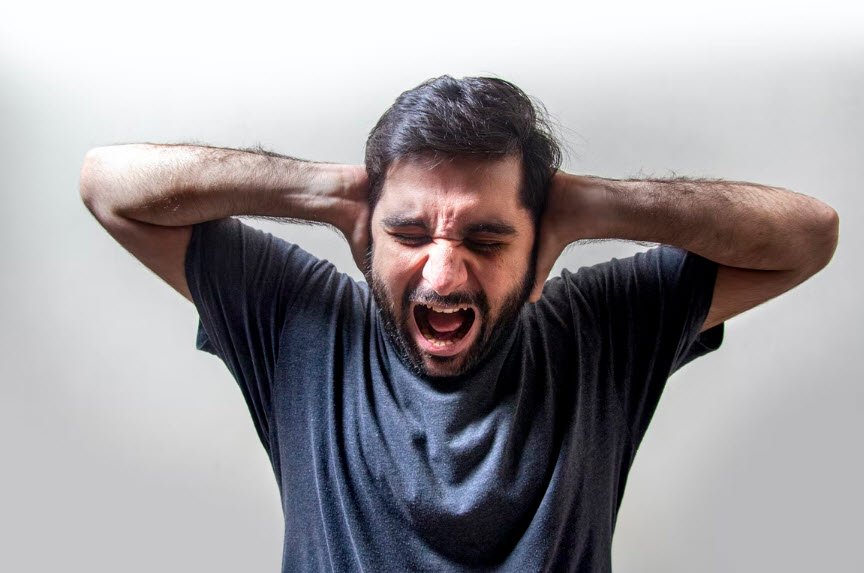
A Headache is defined as a pain in the head or upper neck. It is one of the most common locations of pain in the body and has many causes. There are three major categories of headaches:
- Primary headaches,
- Secondary headaches, and
- Cranial neuralgias, facial pain, and other headaches
Assessment of headache should be comprehensive for example to include
- Age at onset
- Presence or absence of aura and prodrome
- Frequency, intensity and duration of attack
- Number of headache days per month
- Quality, site, and radiation of pain
- Associated symptoms and abnormalities
1. Primary headache
Primary headaches include migraine, tension, and cluster headaches, as well as a variety of other less common types of headache
a) Migraine Headache
This is characterized by a trial of paroxysmal headache, vomiting and focal neurological events (usually visual). It is more common in females than in males often there is a family history of migraine.
Associated precipitants include:-
- Dietary (cheese, chocolate or red wine)
- Psychological stress
General Measures
- Avoidance of precipitants
- Relaxation to reduce stress
Medicines
In acute attack give analgesics:
-
- A: Paracetamol 1g immediately then every 4 hours; Max 4g per day,
OR - A: Aspirin 600mg, repeat after 4 hours if needed
Plus - C: Metroclopramide oral/IM, 10 mg 3 times daily.
- A: Paracetamol 1g immediately then every 4 hours; Max 4g per day,
In severe attack give:
-
- C: Ergotamine tartrate 1-2 mg, maximum 4mg in 24hours, not to be repeated at intervals less than 4 days.
For prevention purposes give:
-
- C: Propranolol 80-160mg daily,
OR - C: Amitryptiline 10-50mg at night.
- C: Propranolol 80-160mg daily,
Referral
- Patient with additional neurological signs or additional risk factors for an alternate diagnosis, such as immune deficiency. These patients require brain imaging
- Sudden onset of a first severe headache may indicate serious organic pathology, such as subarachnoid hemorrhage
- Acute migraine, not responding to treatment
Recurrent migraine not controlled with prophylactic therapy
b) Tension headaches
While tension headaches are the most frequently occurring type of headache, the cause is most likely contraction of the muscles that cover the skull.
Also Read: Ramsay Hunt Syndrome – Some Known Facts
When the muscles covering the skull are stressed, they may spasm and cause pain. Common sites include the base of the skull, the temple and the forehead. Tension headaches occur because of physical or emotional stress placed on the body.
Diagnosis
- The pain begins in the back of the head and upper neck and is described as a band-like tightness or pressure.
- Often is described as pressure encircling the head with the most intense pressure over the eyebrows.
- The pain usually is mild (not disabling) and bilateral (affecting both sides of the head).
- The pain is not associated with an aura (see below), nausea, vomiting, or sensitivity to light and sound.
- The pain occurs sporadically (infrequently and without a pattern) but can occur frequently and even daily in some people.
- The pain allows most people to function normally, despite the headache.
Note:
- The key to making the diagnosis of any headache is the history given by the patient
- If the health care practitioner finds an abnormality, then the diagnosis of tension headache would not be considered until the potential for other types of headaches have been investigated.
Treatment
Tension headaches are painful, and patients may be upset that the diagnosis is “only” a tension headache. Even though it is not life-threatening, a tension headache can affect the activities of daily life. The following work well for most people:
- A: Aspirin (300-900mg (O) every 4-6 hrs max 4g daily)
OR - A: Ibuprofen (1.2-1.8g daily in 3-4 divided doses preferably after food max dose 2.4g daily, maintenance dose of 0.6-1.2g daily may be adequate.)
OR - A: Paracetamol 1g (O) 8hrly
OR - D: Naproxen 0.5-1g in 1-2 divided daily doses
Massage, and stress management can all be used as adjuncts to tension headaches.
- When pain medications are used for a prolonged period of time, headaches can recur as the effects of the medication wear off. Thus, the headache becomes a symptom of the withdrawal of medication (rebound headache).
c) Cluster headaches
Cluster headaches are headaches that come in groups (clusters) lasting weeks or months, separated by pain-free periods of months or years.
The cause of cluster headaches is uncertain. Some evidence shows that brain scans performed on patients who are in the midst of a cluster headache, shows abnormal activity in the hypothalamus. Cluster headaches:
- May tend to run in families and this suggests that there may be a genetic role
- May be triggered by changes in sleep patterns
- May be triggered by medications (for example, nitroglycerin)
If an individual is in a susceptible period for cluster headache, cigarette smoking, alcohol, and some foods (for example, chocolate) also can be potential causes for headache.
Diagnosis
- Pain typically occurs once or twice daily and last for 30 to 90 minutes
- Attacks tend to occur at about the same time every day
- The pain typically is excruciating and located around or behind one eye. The affected eye may become red, inflamed, and watery
Note: Cluster headaches are much more common in men than women.
Treatment
- C: Sumatriptan 6mg; Dose may be repeated after 1 hour. Max dose 12mg a day
OR - C: 100% Oxygen at the rate of 10-15L/min for 10-20 minutes
Prevention of the next cluster headache may include the following:
- C: Verapamil 240-960mg (O) 8 -12 hourly divided doses
OR - C: Amitryptiline 25-50 mg (O) daily
Prevention cluster headaches
Since cluster headache episodes may be spaced years apart, and since the first headache of a new cluster episode can’t be predicted, daily medication may not be warranted.
Also Read: 66 Important Terms and Definitions Related to Pregnancy
Lifestyle changes may help minimize the risk of a cluster headache flare. Stopping smoking and minimizing alcohol may prevent future episodes of cluster headache.
2. Secondary headache
Secondary headaches are due to an underlying disease or injury that needs to be diagnosed and treated. Early diagnosis and treatment is essential if damage is to be limited
Examples of Secondary headache:
- Head and neck trauma
- Blood vessel problems in the head and neck
- Stroke or transient ischemic attack (TIA)
- Arteriovenous malformations (AVM) may cause headache before they leak
- Carotid artery inflammation
- Temporal arteritis (inflammation of the temporal artery)
- Non-blood vessel problems of the brain
- Brain tumors, either primary, or metastatic
- Seizures
- Idiopathic intracranial hypertension, once named pseudo tumor cerebri,
- Medications and drugs (including withdrawal from those drugs)
- Infection
- Malaria
- Meningitis
- Encephalitis
- HIV/AIDS
- Systemic infections
- Infection
Diagnosis
- If there is time, the diagnosis of secondary headache begins with a complete patient history followed by a physical examination and laboratory and radiology tests as appropriate
- However, some patients present in crisis with a decreased level of consciousness or unstable vital signs. In these situations, the health care practitioner may decide to treat a specific cause without waiting for tests to confirm the diagnosis








